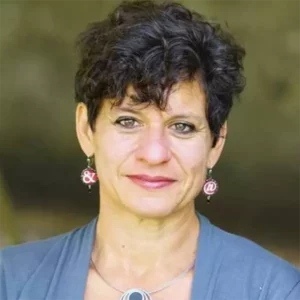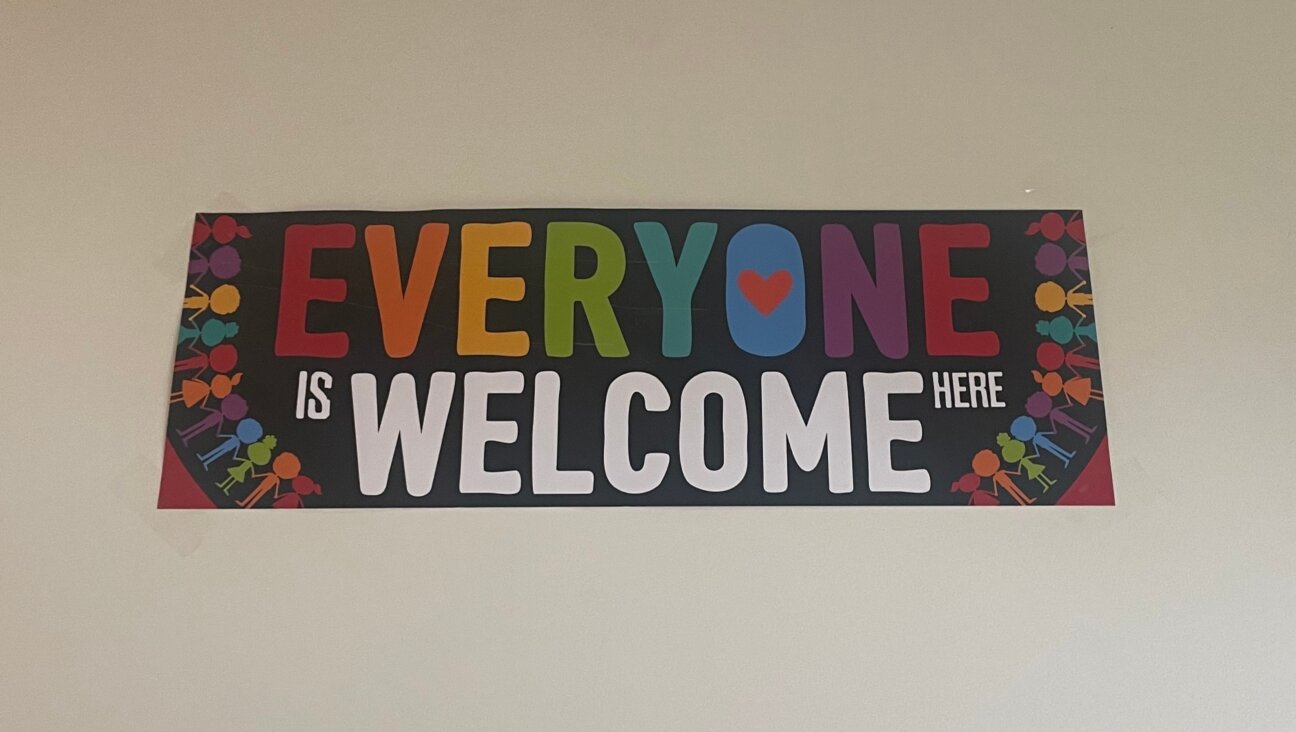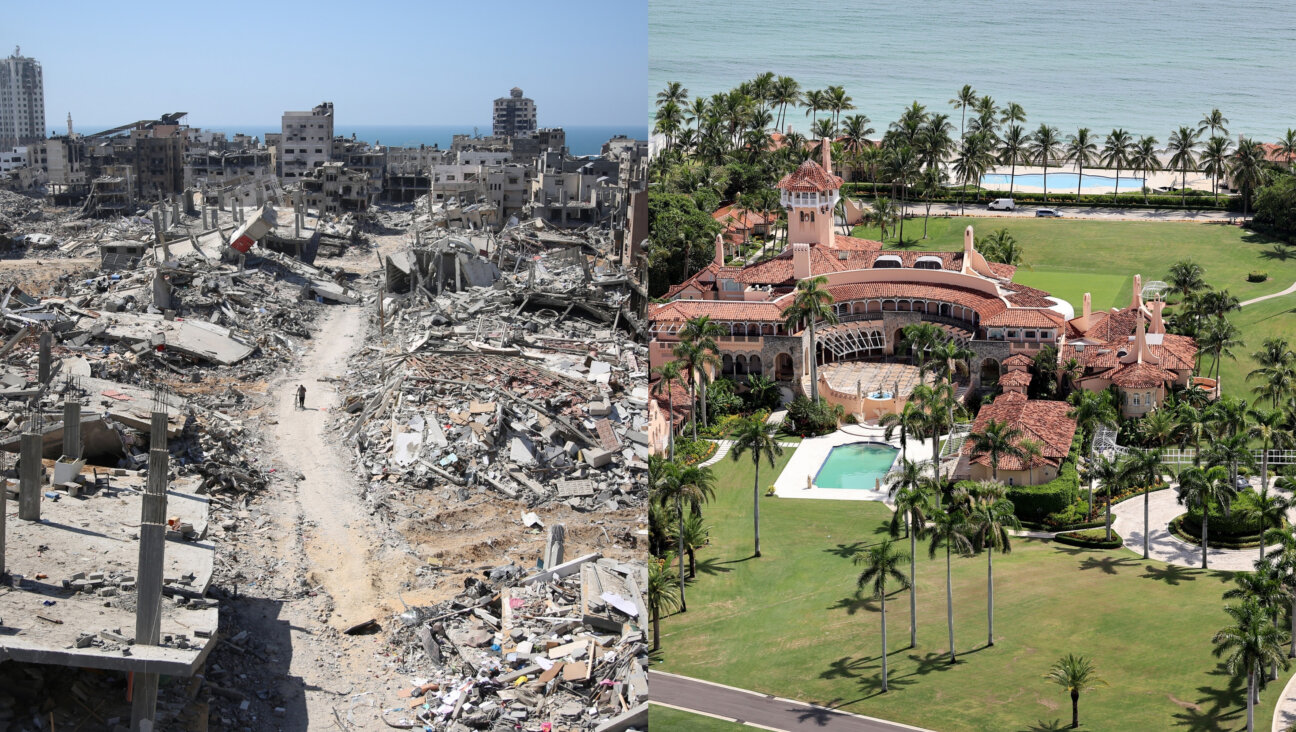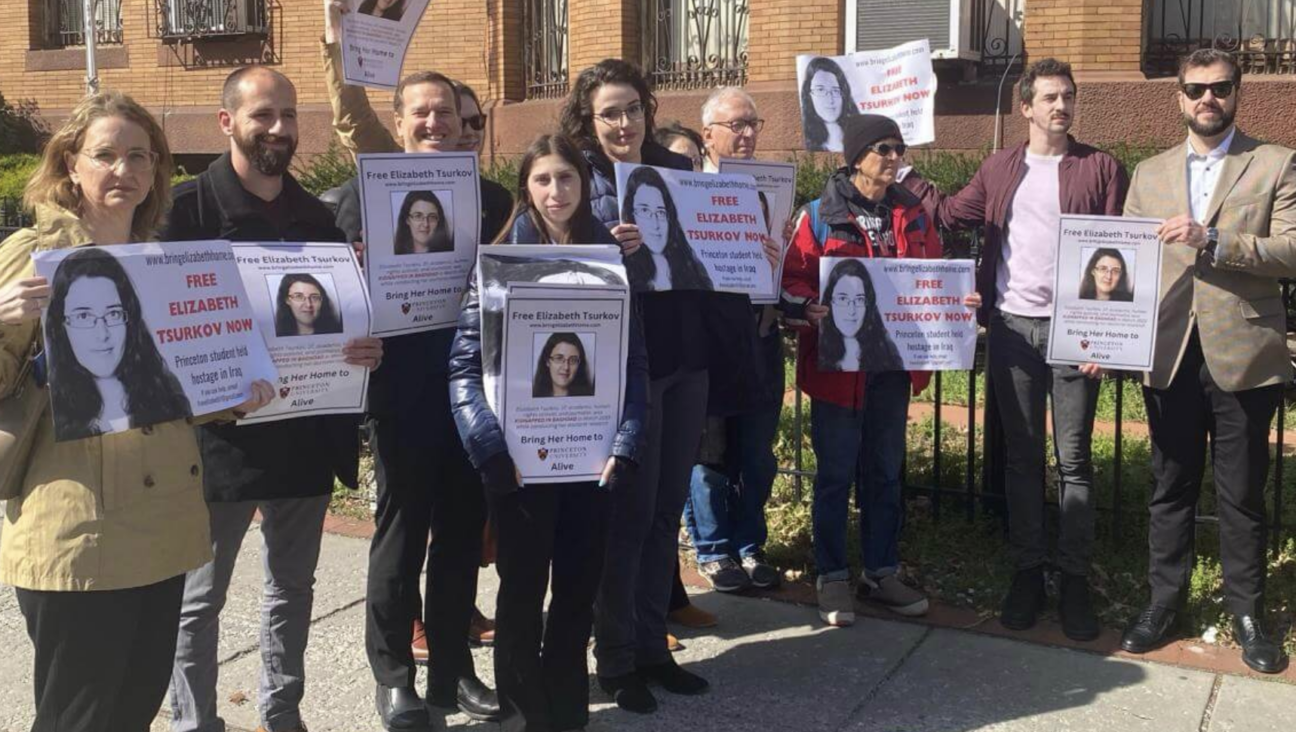How the Amsterdam pogrom is—and isn’t—like Europe in the 1930s
“I think Europe will become Judenrein,” said Abe Foxman, a Holocaust survivor who spent a half century as head of the ADL

A fan of the Israeli Maccabi soccer team walks through David Ben-Gurion airport after Israeli officials evacuated Israelis from Amsterdam Thursday night. Photo by Jack Guez, AFP
This is an adaptation of our editor-in-chief’s weekly newsletter. Sign up to get it delivered to your inbox on Friday afternoons.
The morning after the Amsterdam soccer pogrom, Abe Foxman faced an impossible dilemma.
His 20-year-old granddaughter was in Amsterdam and had spent part of Thursday night sheltering in a restaurant to avoid the antisemitic marauders on the street. Now she was asking Foxman, who was born in Poland in 1940 and spent half a century running the Anti-Defamation League, whether she should go ahead with her plan to visit the Anne Frank House.
“A Jewish kid is asking her Holocaust-survivor grandpa, ‘Is it safe for a Jew to go today to the Anne Frank House in Amsterdam?’ That’s a horrific question but it’s a legitimate question,” Foxman said when we spoke Friday morning. “I don’t want to scare her; I want to calm her. But I don’t know how safe it is. I don’t know how many Arabs are waiting for Jews to come to the Anne Frank House.
“For us to struggle with the answer, what do we tell her — just this dilemma is horrific.”
I spent Thursday evening speaking at a Kristallnacht commemoration about whether the rise in antisemitism — and authoritarianism — we are experiencing is an echo of the 1930s Europe that produced that horrible pogrom. None of us knew that while we were talking in the safety of a Manhattan synagogue, a modern-day pogrom was unfolding on the streets of Amsterdam.
The videos of mobs chasing and beating Israeli soccer fans who’d traveled to the Netherlands to cheer the Maccabi Tel Aviv team are, as Foxman said, horrific. Also chilling, terrifying, outrageous and all the other negative adjectives you can think of. But this is not the 1930s.
With no support from Dutch police, some Jews have chosen to unite and take matters into their own hands, deciding to fight back. pic.twitter.com/5whXLnB8kX
— Open Source Intel (@Osint613) November 8, 2024
There are crucial differences between what erupted on Amsterdam’s streets last night and the Night of Broken Glass that shattered Germany and Austria 86 years ago, chiefly the existence and strength of the Jewish state of Israel.
Israel dispatched two planes to rescue the soccer team and its fans Friday afternoon, and sent its foreign minister to meet with his Dutch counterpart. A stark contrast with Kristallnacht, which happened days after Hitler ordered the expulsion of some 12,000 Polish Jews living in Germany. They were given a single night to leave their homes and loaded onto trains to the border of Poland, where most were denied entry.
Germany’s ruling Nazi Party orchestrated Kristallnacht, in which Jewish homes, businesses and synagogues were looted and burned, and 100 civilians were murdered while police stood idly by or participated. Dutch officials may have ignored warnings by Israel’s security services about the potential for violence around the Europa League soccer game, but they arrested 62 rioters and on Friday morning made strong statements condemning the attacks that sent five Israelis to hospitals and injured another five.
Have been following the news from Amsterdam and am horrified by the antisemitic attacks on Israeli citizens. This is completely unacceptable. I am in close contact with all parties involved and have just spoken to @IsraeliPM Netanyahu by phone to stress that the perpetrators will…
— Dick Schoof (@MinPres) November 8, 2024
“We failed the Jewish community of the Netherlands during the Second World War,” the king of the Netherlands told the president of Israel in a Friday phone call,“and last night we failed again.”
Amb. Deborah E. Lipstadt, the U.S. special envoy on antisemitism, tweeted Thursday night that the attacks were “reminiscent of a classic pogrom,” a post viewed more than 655,000 times over 12 hours. Lipstadt is first and foremost a Holocaust historian, so I called her to ask if history was repeating itself.
“It’s not the same because Kristallnacht was government sponsored — in the 1930s, it was government-sponsored, this is not government-sponsored,” she noted. “If you’re down on the ground and being kicked, does that make you feel better? No. But if you’re sitting back and thinking about it, it matters.”
Lipstadt said she hoped to visit Amsterdam as soon as next week. “We are flabbergasted, completely gobsmacked — I guess shocked is the best word, we are shocked to see something like this happen in the capital of one of our close democratic allies,” she told me. “The authorities were AWOL and the Dutch have admitted that. So we express our dismay, we express our shock, and we tell our allies we expect better.”
There is another crucial difference between the 1938 attacks on Jews that took place solely because they were Jewish and the 2024 attacks on Israeli soccer fans because they are Israeli. It’s not an excuse for the violence — there is absolutely no excuse for the kind of wanton mob violence captured in video clips in Amsterdam last night — but it is still true that last night’s rioters were motivated at least in part by geopolitics as well as Jew-hatred.
The reality is that Israel’s prosecution of the war in Gaza — a war spawned by the Hamas terror attack of Oct. 7, but also a war that has now gone on far too long and cost far too many lives — has combined with underlying Jew-hatred to make it unsafe for Israeli soccer fans to travel abroad and cheer for their team.
That, too, is horrific and terrifying and shocking.
But the fact that these attacks were motivated by anti-Zionism does not erase their clear antisemitism. While I am generally a defender of the mainstream media’s coverage of the Israeli-Palestinian conflict against accusations of bias by both sides, I was dismayed by many of the headlines about Amsterdam on Friday morning. The Associated Press, Reuters, The New York Times, CNN, NPR and others used the passive voice — “Israelis were attacked” — and quoted officials describing the attacks as antisemitic rather than doing it themselves.
The violence in Amsterdam once again puts the lie to the left’s reductive view that the world is divided into oppressor and oppressed — and that Israel and Jews are oppressors.
Israeli soccer fans are not oppressors, even if some of them were chanting racist slogans and vandalizing Palestinian flags. Any civilians chased and beaten by unruly mobs because of their identity are among the oppressed.
“People are now saying the crowd was rowdy, the Israelis were saying, ‘Let’s kill the Arabs,’” Lipstadt noted. “I don’t care what they were saying, that doesn’t give you the right to kick someone when they’re down on the ground and make people say ‘I’m not a Jew’ in order to escape safely.”
Today, on the eve of the 86th anniversary of Kristallnacht, the day when Nazism crossed the line between "everyday" and real anti-Semitism, when in 1938, Hitler's Germany destroyed more than 300 synagogues, arrested and tortured more than 30,000 Jews... A wave of very similar… pic.twitter.com/FSsXN1YygP
— Chief Rabbi Of Ukraine Moshe Azman (@RabbiUkraine) November 8, 2024
Both she and Foxman said Thursday’s violence was not an anomaly. Indeed, in its report about the year following the Oct. 7, the ADL put the surge in global antisemitism at the top of its list of troubling trends, charting huge jumps in incidents across Europe and in Australia and South Africa. In the Netherlands, the report said, there were eight times as many antisemitic incidents in the month after the Hamas attack as there had been in an average month during the three prior years.
Foxman spent much of Thursday night and Friday watching Israeli TV and was chilled to hear officials advising Israelis abroad to remove any clothing or symbols that would identify them as Israeli or Jewish, an echo of his own childhood in the Holocaust. Chabad in Amsterdam was organizing rides to the airport amid rumors that local taxi drivers were connected to the hooliganism.
“I think Europe will be Judenrein,” Foxman told me, ominously, using the German — Nazi — term from the Final Solution meaning cleansed of Jews. “There’s 20,000 Israelis living in Amsterdam. There’s an Israeli restaurant. Is it going to survive?”
Foxman was still texting with his granddaughter, a student at Northwestern University who is studying abroad in Madrid this fall. She had gone to Amsterdam for the weekend in part to attend the Maccabi soccer game, though it turned out the tickets she bought online were fakes.
On Friday, the granddaughter and the friend she was visiting in Amsterdam had planned to have lunch at the Israeli restaurant, but canceled that, Foxman told me. He arranged for them to have Shabbat dinner at the home of a local Jewish family. In the end, they also nixed the Anne Frank House; the young woman’s mother, Foxman’s daughter, was just too scared of what might happen.
“I promise you we will go together to visit in the future,” Foxman’s daughter texted the granddaughter.
I hope they do — and can safely and without fear.
A message from our Publisher & CEO Rachel Fishman Feddersen

I hope you appreciated this article. Before you go, I’d like to ask you to please support the Forward’s award-winning, nonprofit journalism so that we can be prepared for whatever news 2025 brings.
At a time when other newsrooms are closing or cutting back, the Forward has removed its paywall and invested additional resources to report on the ground from Israel and around the U.S. on the impact of the war, rising antisemitism and polarized discourse.
Readers like you make it all possible. Support our work by becoming a Forward Member and connect with our journalism and your community.
— Rachel Fishman Feddersen, Publisher and CEO





























